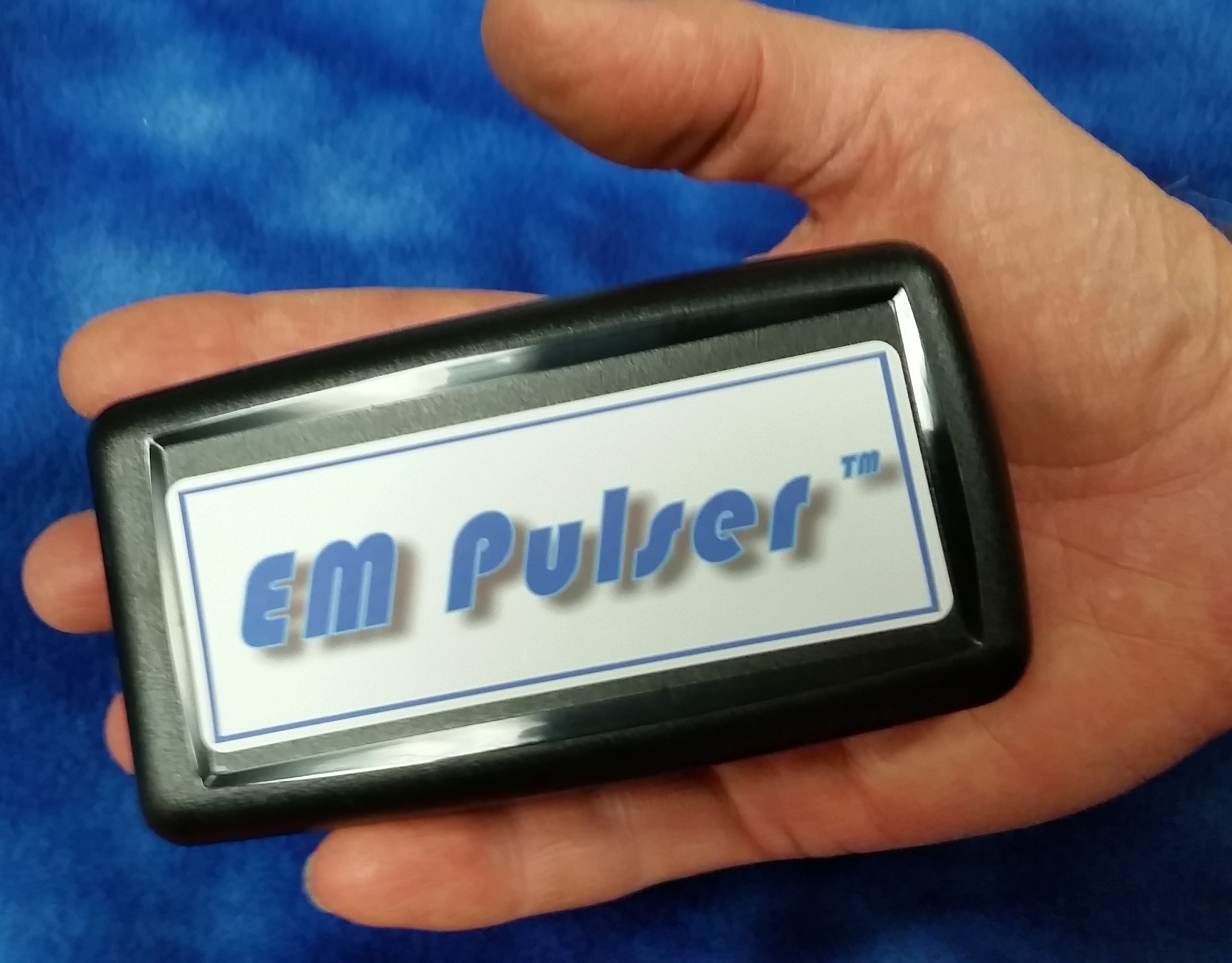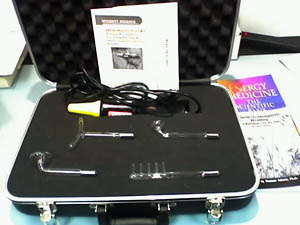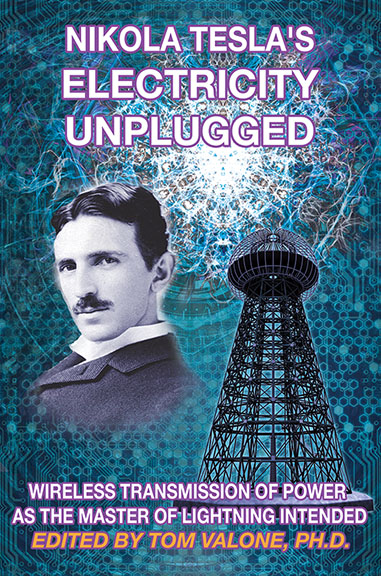|

|
|
|
|
May 2016 
|
|
We are happy to see
Spring in the Nation's Capital and a Spring-like upsurge in
renewable energy growth throughout the country. Wind energy for
example, now at 70 GW total US capacity, has reported dramatic
steady growth with Iowa, Kansas, and S. Dakota generating over
20% of their electricity by wind http://www.awea.org/generationrecords.
As IRI continues to expand its role in pioneering future energy
to provide a portfolio of choices for everyone in the coming
years, as global warming becomes more critical, your support is
vital. Please remember to use www.smile.amazon.comwhen
shopping at Amazon, for example, and designate "Integrity
Research Institute" as the recipient of the percent donation
that Amazon pays for when you buy something! Another way you can
help provide renewable energy to those who really need it is to
visit https://mpowerd.com/products/give-luci and
give a solar-powered LED lantern to Nepal students. The EMRG
model provides up to 8 hours of light after charged in sunlight
during the day and only cost $9 each (they also make great
presents for family and friends)!
This month our first
story is perhaps the most important of the year since it
represents a true breakthrough in propulsion. While NASA is
engaged in testing the EmDrive, various reports have already been
published including the most comprehensive "Testing
Quantised Inertia on the EmDrive" http://arxiv.org/pdf/1604.03449v1.pdf that
compares several experiments with the best McColloch theory and
finds remarkable agreement with most of them.
Our Story #2 is
quite exciting for IRI since it announces the release of a new
anthology that sets a high standard of excellence for Nikola
Tesla and his wireless transmission of power. With almost 20
contributors and almost 500 pages, the book will no doubt become
a notable reference volume for years to come. The most surprising
content is the 2016 journal paper providing a detailed
description of the Zenneck (a contemporary of Tesla) surface
transmission wave theory and experiment by Dr. James Corum and
Ken Corum. This contribution by the Corums puts the public on
notice that soon we will have another choice of utility for
receiving electrical power that will not be interrupted by
weather disasters, since they are consulting for a commercial
enterprise www.texzont.com dedicated
to the endeavor.
Story #3 celebrates
the latest milestone in the highest efficiency for solar power
yet achieved: 35%. As the University of South Wales reports, it
approaches the theoretical limit for sunlight to electricity
conversion and was accomplished without concentrators which
usually boost power concentration.
Story #4 continues
our IRI investigation of the numerous violations of the Second
Law of Thermodynamics. Now theory and experiment has shown that
nanoparticles can be positioned to lose heat to the
environment, even if they are cooler than the surrounding region,
instead of absorbing energy as dictated by the Second Law. While
this may seem like a rare exception to the well-known entropy
rule, the prestigious Springer Publishers has a 350-page 2005
textbook on the subject, Challenges to the Second Law of
Thermodynamics, by Capek and Sheehan, in the Fundamental Theories
of Physics series: http://www.springer.com/us/book/9781402030154.
Obviously there is
more to the phenomenon which allows numerous
"exceptions" to entropy to take place where energy is
involved.
Story #5 is an
intriguing mechanical feat of engineering that converts motion
into electricity, such as when harvesting the oscillating motion
of ships or any other moving system. The full story is at http://revolution-green.com/witt-technology-converts-motion-electricity/ where
a short video explains the invention by WITT Energy company www.witt-energy.com ,
which includes a 200-watt marine model in production. The company
also achieved record breaking crowd funding for the project.
Don't forget to
register for our exceptional DUAL conference in July www.futurenergy.org where
two parallel sessions (COFE8 and ExtraOrdinary Technology) are
available for one low price! The best conference available today
on cutting edge energy developments.
|
|
|
Our Best Selling nano
second PEMFdevice
|
|
|
Our most
popular HIgh voltage device
|
|
|
|
Best NanoSecond PEMF for
arthritis, bone issues
|
|
|
|
1) EM Drive: Breakthrough in
Propulsion
|
|
By Jennifer Harrison,
Senior Officer, Gadgette May 2016
Ed. Note: McCulloch
explains the group of consistent EmDrive experiments,
designed by a rocket scientist, along with flyby, Pioneer, and
galactic spin anomalies below, withquantized inertia from
the zero point field as an asymmetric Casimir force and Unruh
radiation that satisfies conservation of momentum, including
elimination of "dark matter" on the galactic scale.
Very hard to dismiss the above experimental and theoretical
matchup, along with all of the articles below, as just theory.
The flyby anomalies finally have an explanation (#2, #9,
#10) for example. MIT (#2) states: "McCulloch's theory could
help to change that, although it is hardly a mainstream idea. It
makes two challenging assumptions. The first is that photons have
inertial mass. The second is that the speed of light must change
within the cavity. That won't be easy for many theorists to
stomach." The best intro to the latest news is
from May 7, 2016 Article
with several good, short videos! -
TV
In 2001, a researcher named Roger Shawyer created
something he called the EmDrive. He described it as a new space
propulsion technology that can create thrust without propellant.
It uses microwaves and electricity and he claimed it could
theoretically push spacecraft through space without using any
rocket fuel. If it really works, it will revolutionise space
travel. We could get to Mars in 10 weeks without propellant.
Although Shawyer created a working model, the
EmDrive wasn't accepted by the scientific community. For it to
work the way Shawyer describes it, the EmDrive must defy our
current understanding of physics. He wasn't the first person to
make physics-defying claims so it's no surprise that physicists
didn't take him seriously. Shawyer and his creation probably
would have faded into obscurity if it wasn't for the fact that 4
independent labs, including NASA's Advanced Propulsion Physics
Laboratory, have recreated the drive and reported that it does
create thrust. They just can't explain why.
Bouncing microwaves
The EmDrive is an electromagnet propulsion device, though it's
also known as a radio frequency resonant cavity thruster. A
magnetron creates microwaves, which are bounced around inside an
enclosed cavity that's tapered to be a big cone. It's designed so
that thrust will be generated in the direction of the narrow end
of the cone.
Energy is required in the form of electricity to run
the magnetron but that's all. There's no fuel added and nothing
is kicked out of one end to make the drive move. It seems to
generate thrust all by itself without propellants. Thrusters that
use electromagnetic propulsion isn't new and there have been
experiments on ion thrusters since the 1960s. These earlier
concepts are known as "low-propellant" as they can
generate force with very little propellant but that doesn't upset
any physicists. The EmDrive literally claims to do the
impossible.
Thrust
The most likely explanation for the thrust created by the EmDrive
is that there's a measuring mistake. The thrust is very tiny so
perhaps scientists are seeing something that's not really there.
But more and more labs are recreating the experiments and making
their measurements more precise. NASA has even got the EmDrive
working in a vacuum to show that the thrust has nothing to do
with air pressure. Over 8 experiments in 4 labs somehow keep
finding that the EmDrive can generate thrust without any
propellent. According to NASA:
"Test results indicate
that the RF resonant cavity thruster design, which is unique as
an electric propulsion device, is producing a force that is not
attributable to any classical electromagnetic phenomenon."
It can't be overstated how controversial the EmDrive
is. It makes no sense in light of physics. Think back to your
lessons on Newton's laws. The reason the scientific community
isn't willing to accept that the EmDrive really works is that it
defies the conservation of momentum.
Spacecraft can't move forward unless propellant is
fired backwards or the spacecraft is pushed by something else.
Most of our ships have used rocket fuel to get them going, and
futuristic solar sails will reflect particles from the solar
winds. You don't just get movement from nowhere... unless it's
the EmDrive. When New Scientist published an article about the
drive and said it was plausible, there was a backlash from
physicists claiming sensationalism. Physicist Paul Friedlander
wrote:
"As I read it, I, like the
thousands of other physicists who will have read it, immediately
realised that this was impossible as described. Physicists are
trained to use certain fundamental principles to analyse a
problem and this claim clearly flouted one of them... The Shawyer
drive is as impossible as perpetual motion. Relativistic
conservation of momentum has been understood for a century and
dictates that if nothing emerges from Shawyer's device then its
centre of mass will not accelerate."
The consensus is clear: Shawyer's theory and
experiment are flights of fancy and should be ignored. However,
the independent labs are all claiming that the drive is doing
something. Over time, the results are starting to look less and
less like errors and more like an actual phenomenon that needs to
be explained. It's very plausible that thrust really is being
created but all the researchers have overlooked some force that
could explain it without violating the conservation of momentum.
But what if? If we have a drive
that is genuinely creating thrust with no propellant, how could
that be happening?
A number of hypotheses have
emerged that assume there really is thrust being created without
an obvious propellant. Many of these hypotheses are as
controversial as the EmDrive itself. For example, physicists
predict there are some particles that can simply pop into
existence now and then throughout the universe. It could be that
particles appearing inside the drive are being pushed out the
back and nobody is realising. Like most of the hypotheses, they
aren't exactly easy to prove and sound far-fetched.
News about the EmDrive has been buzzing again
recently because a paper has been published with another
controversial hypothesis but it's one of the most interesting so
far. The author, Dr Mike McCulloch of Plymouth University, claims
that the drive's thrust might mean we need a new theory of
inertia and he has suggestions. His idea is controversial, but
it's also testable. That's what makes it worth considering. Also,
if true, it could explain the thrust without violating the
conservation of momentum.
The hypothesis (MiHsC) seems counter-intuitive at
first glance because it suggests that momentum increases as the
thruster moves, but his model is a surprisingly good fit for the
results and some other observations already made. His model
involves inertia, which is about how massive objects resist being
moved or accelerated to an extent. Imagine a planet hurtling
through space at high speeds. It's really difficult to stop it or
even slow it down considerably or in other words it has a lot of
inertia. Physicists have appreciated inertia for centuries but it
isn't clear why intertia actually exists. What causes it to
happen?
Unruh radiation
McCulloch proposes that inertia can be explained by the Unruh
radiation predicted by Einstein's theory of general relativity.
Basically, the faster you move, the warmer things get for you.
McCulloch's idea is that inertia is just Unruh waves putting
pressure on accelerating objects.
We don't notice this phenomenon
at the everyday speeds we think of as normal, but at tiny accelerations the
wavelengths of Unruh radiation are so long that they don't even
fit within the observable universe. The result? At low
accelerations, inertia is forced to use only whole-level Unruh
wavelength values.
The jumping from one whole wavelength value to
another during low acceleration can explain an intriguing
mystery: the Flyby Anomaly. When spacecraft accelerate around
planets, they end up faster than we expect and nobody can figure
out where they get the extra boost from. Bizarrely, the speed of
spacecraft appears to increase in small "jumps", which
fits McCulloch's model well. He thinks the unaccountable boost
comes from radiation pressure from Unruh waves. The model has
also been proposed to explain the rotation of galaxies without
the need for dark matter.
McCulloch believes the Unruh radiation could also
explain why the EmDrive works. The coned shape of the drive's
enclosed cavity means that Unruh waves are different sizes at the
different ends of the cavity. If his ideas about inertia being
caused by Unruh radiation are true, we should expect photons
bouncing around inside to have their inertia changed, with
stronger radiation pressure in one direction than the other.
Because momentum is always conserved, which is what physicists
have been saying all along, thrust is generated.
McCulloch's model explains some anomalies and fits
some experimental data but why should we care? Well, for starters
it's entirely testable. There are a number of ways to test his
hypothesis and the most obvious is simply to redesign the
EmDrive. McCulloch has suggested making the length of the
EmDrive's cavity the same as the diameter of the smaller end. If
he's right, Unruh radiation will fit better at the small instead
instead and the thrust will be reversed. It's a fairly
straightforward test and hopefully we'll know what happens soon.
If it works?
The obvious application of the EmDrive if it really works is in
space travel, which would become fast and efficient. A journey
from Earth to Mars could take just a few months and use no fuel.
If the drive really does continue to accelerate, we could send spacecraft
to other stars faster than we ever thought possible. Thrust with
no propellant could even lead to transport technologies used on
Earth. Think of all those flying cars in sci-fi films.
The problem is still the explanation. If you were in
charge of a space organisation, would you spend millions to build
and launch spacecraft with EmDrives if you don't even know
exactly how they work? There's a very good chance that the drives
don't work and that people are mistaken. Indeed, that's the
consensus. If this will change when McCulloch's hypothesis is
tested remains to be seen but before we can travel to other stars
without using fuel, we'll need to know what the hell we're
actually doing.
Perhaps the EmDrive is doing nothing special. Or
perhaps it's breaking physics and we need to rewrite the
textbooks. Or perhaps momentum is conserved still but there's a
form of radiation nobody considered that could explain the thrust
and other anomalies associated with inertia. With so many labs
interested in the drive, we'll soon have an answer. Step one:
let's be really sure about these test results.
Physicists rightly still think
the EmDrive is a load of nonsense, and it probably is. But
wouldn't it be nice to be wrong?
|
|
2) New Tesla Book: Nikola Tesla's
Electricity Unplugged
|
|
Press Release:
Integrity Research Institute, May 20, 2016
Nikola Tesla's
Electricity Unplugged, edited by
Thomas Valone, is a unique anthology of handpicked Tesla
articles, arranged historically, which presents overwhelming and
convincing evidence for the reality of Tesla's high efficiency,
low cost wireless power transmission.
Following in the footsteps of
the editor's first book in the series, Harnessing the Wheelwork
of Nature, Dr. Tom Valone's book chronologically
traces the original intention that Nikola Tesla had for his
wireless electricity and how he updated and expanded upon it
later on, with reprints of his key articles, to the recent genius
engineers and physicists who are now finally bringing this last
and most elusive, highly advanced Tesla technology into
reality.
The Corum article (along with
the Peterson article) on the Zenneck wave transmission
experiments culminates the viewpoints of all of the book's
contributors. Its purposeful placement as the last chapter of the
book, is because this exclusive article publication is a major
scientific breakthrough, as testified by the book's endorsement
from Brigadier General Michael Miller, and foretells the
understandable, visionary road to the corporate formation of
wireless power utilities.
Furthermore, this is the first
and only book in the world which explains how an electromagnetic
wave traveling across the electrically conductive surface of the
earth, was predicted by Tesla and Zenneck (two pictures in the
book show them together on pages 74 and 381) and why it is the
essential missing link of any Tesla wireless transmission theory.
Many of the contributors also nicely explain the "surface
wave phenomenon" as well as "resonant earth-ionosphere"
modes of electrical transmission without wires that compliments
the surface wave theory and experiment.
Nikola
Tesla's Electricity Unplugged therefore is a treasure compared to any other Tesla
reference book currently in print, since it is jam-packed with
personal stories of Tesla, along with great illustrated
slideshows adapted for the book format, the "secret"
history of Tesla's wireless, the real Tesla electric car, high Q
resonant power transfer examples being used today by Qualcomm,
"Tesla unplugged" explained in an easy-to understand
presentation by a Brookhaven National Lab scientist, wireless
electricity article based on scalar waves, even including a
couple amazing rigorous equation articles with wireless solutions
for the tech audience, a unique and evocative Foreword by
Nikola Tesla's last living direct descendant, all presented in a
457-page paperback book, suitable as a college or high school
reader, or simply as an eye-opening, optimistic window onto the
electrical genius regarded as the "Master of
Lightning," with a priceless collection of nineteen (19)
contributors not available anywhere else.
|
|
3) New World Record Set for
Converting Sunlight Into Electricity
|
|
By Eric Mack May 17, 2016, Gizmag
An Australian team has set a new record for
squeezing as much electricity as possible out of direct,
unfocused sunlight via a new solar cell configuration. Engineers
at the University of New South Wales (UNSW) achieved 34.5 percent
sunlight-to-electricity conversion efficiency, a new mark that
also comes closer than ever to the theoretical limits of such a
system.
UNSW's Dr. Mark Keevers and Professor Martin Green
set the record with a 28 centimeter-square (4.3 sq in), four-junction
mini-module embedded in a prism. This new configuration allows
the sun's rays to be split into four bands so that a higher
amount of energy can be extracted from each beam.
The same team reached a higher level of
efficiency a few years back using mirrored
concentrators that were able to convert 40 percent of incoming
sunlight to electricity. However, this new record is the highest
level achieved without the use of concentrators.
"What's remarkable is that this level of
efficiency had not been expected for many years," said
Green, citing a German study that set a goal of 35 percent
efficiency to be reached by 2050.
The team does not expect that its record-breaking
cell configuration will find its way on to home or office
rooftops anytime soon, as they are more costly to manufacture.
The group is working to reduce the complexity to make them
cheaper to produce and sees a future for them on solar towers
that make use of concentrating mirrors.
Meanwhile, efficiency gains are also being made in
the development of organic solar cells that are cheaper and more
flexible. There's still a long way to go though, as most recent
record for photovoltaics set in February was 13.2 percent
efficiency.
Source: University of New South Wales
|
|
4) Nanoparticles Found to
Violate the Second Law of Thermodynamics
|
|
By Heidi Hoopes, Gizmag 2016
It may be a little late for April Fool's, but some
skepticism is nonetheless warranted when reading that researchers
have shown nanoparticles to disobey a fundamental law of physics
which dictates the flow of entropy and heat in, it was believed,
any situation. Specifically, researchers from three universities
theoretically proposed then demonstrated that a nanoparticle in a
state of thermal non-equilibrium does not always behave as larger
particles might under the same conditions, with implications for
various fields of research.
The second law of thermodynamics is the one that
makes perpetual motion machines impossible. It states that the
entropy - the measure for the disorder of a system - of any
isolated system cannot decrease spontaneously, with the system
evolving towards the state of maximum entropy (favoring
disorder). The team has shown that a nanoparticle trapped with
laser light temporarily violates this law. This seeming violation
of universal law is transient, something that the researchers
first derived as a mathematical model of fluctuations expected at
the nanoscale.
To test their theorem, scientists at the University
of Vienna, the Institute of Photonic Sciences in Barcelona and
the Swiss Federal Institute of Technology in Zürich trapped a
nanosized silica sphere with a radius of less than 75 nm in a
laser "trap." Not only was the particle held in place,
but could be precisely measured in three different directions,
important when your particle is so small that 10,000 of them
could line the width of a pinhead.
The nano-sphere was cooled lower than the
temperature of the surrounding gas, creating a state of
nonequilibrium. At a macro scale, a state of thermal
non-equilibrium is what dictates that a snowman melts in a
suddenly warming environment by absorbing heat from its
surroundings, rather than growing more frozen by losing heat. A
blindingly obvious example, yet at the nanoscale, such real-life
observations are not without exception.
Indeed, by measuring the oscillations in the
particle, the researchers were able to determine that the
nanoparticle would, at times, effectively release heat to its
warming surroundings rather than absorb heat.
Nanoparticles could range from natural parts within
cells to man-made devices being developed in medicine and
electronics. All of these particles experience random conditions
due to their tiny scale. Both this experimental setup and the
fluctuation theorem represent new ways to assess how nanoscale
technology might fare when exposed to random environmental
buffetings. Further studies are planned to further explore this
phenomenon.
|
|
|
5) Motion into Electricity
|
|
By Mark Dansie, Green Revolution April 2016
One of the largest potential sources of renewable
energy is from capturing motion of the ocean and attaching a
harvester to other moving objects. When I first reviewed this
technology my immediate thoughts were too many moving parts.
However a closer look reveals a really innovative feat of
engineering that has applications for watts to megawatt devices.
It may also finally allow for the economic viability of harvesting
the power or the ocean from yachts to power stations.
Witt Technology have built prototypes to demonstrate
how technology can generate electricity from motion. They
have used these prototypes to show potential customers,
engineering partners, agents, technology experts and global
businesses how good the WITT is. The WITT is able to a generate
renewable power where it is needed and are engaging with several
industry partners to bring their technology to mark
The WITT converts motion into electricity
Contained within a sealed unit, WITTs utilize a 3D
pendulum which drives the transmission system, converting all
motion, in any combination of the six degrees of freedom, into a
single unidirectional rotation of a flywheel, to produce
electricity! WITT's harvest chaotic motion, fast, slow or erratic,
turning into useable power. No other energy harvesting system can
capture this full spectrum-thus the WITT absorbs up to 100% more
energy compared to other devices!
No other device captures energy from all 6 degrees of
motion
Whatever Input to Torsion Transfer is a uniquely
developed technology.
- 1 Rotation around 1st
axis
- 2 Rotation around 2nd
axis
- 3 Rotation around 3rd
axis
- 4 Back and forth
- 5 Side to side
- 6 Up and down
No existing technology provides a consensus choice. A
sealed WITT is resistant to harsh sea environment, a 'fit &
forget' solution. WITT will harvest power from surge & pitch,
sway & roll, with NO SHOCK LOAD. This offers twice the
capacity for wave power conversion than other devices. WL working
with Mojo Maritime, DNV GL, OREC, Gibbs Gears, & Universities
of Bristol, Plymouth & Southampton in feasibility re
generating offshore grid scale power.
|
|
If you
enjoy this service, please consider making a donation by
clicking on the button below. We are a 501 (C)3 Non Profit
Institute and your donations are fully deductible to the maximum
allowed by law.
|
|
|
|
|
|

|
![]()




















